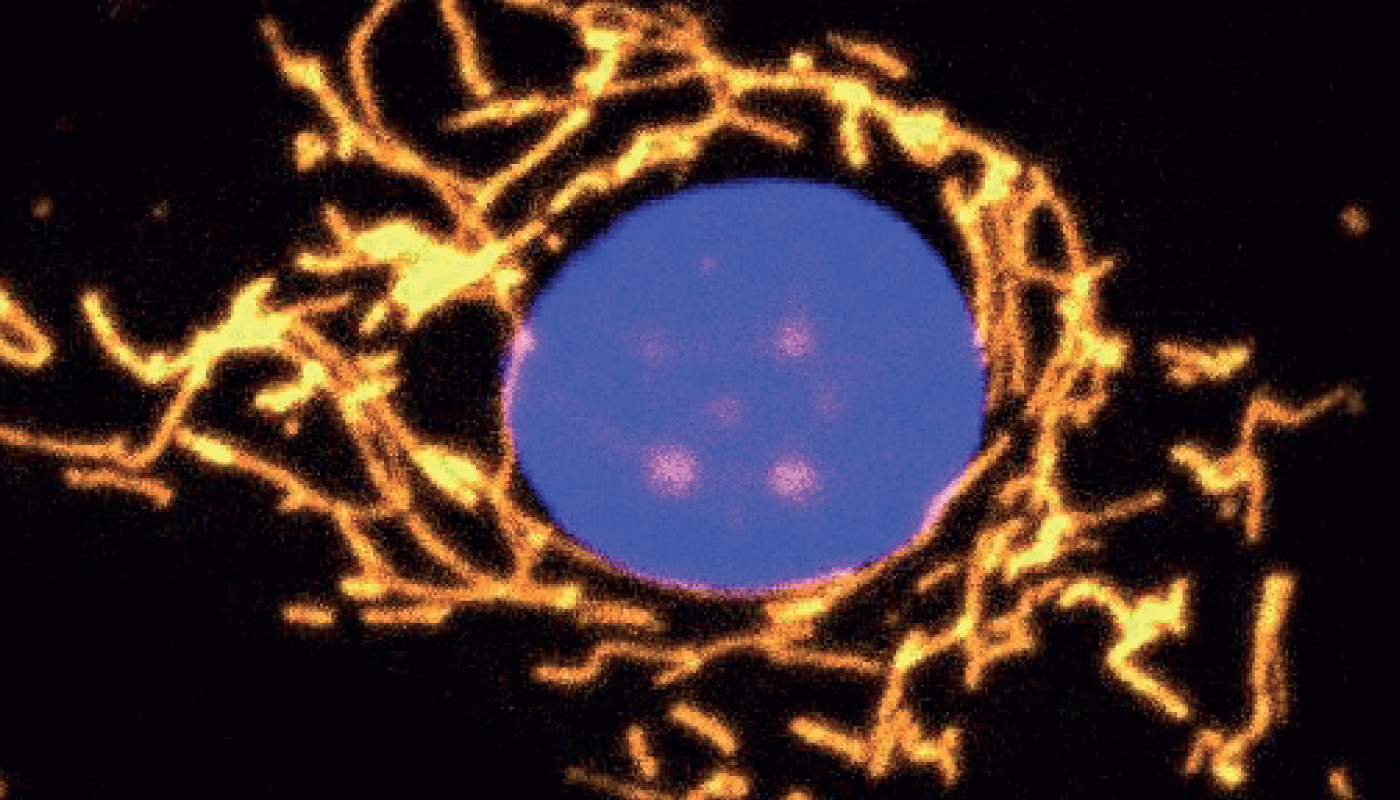
- Scientists at Trinity College Dublin in Ireland have developed a new gene therapy with the potential to treat dominant optic atrophy (1). The approach improves mitochondrial performance in cells containing mutations in the OPA1 gene (see figure 1).
- A novel imaging technique – serial block face scanning electron microscopy – has been used to digitally reconstruct eye tissues of the outer retina, providing new understanding into age-related diseases resulting in sight loss, such as AMD (2).
- New research reveals that massive apoptosis of chandelier cells – branched neurons that can inhibit the signaling of cells in their vicinity, affecting the brain’s integration of visual information – plays a key role in binocular vision development. Blocking this apoptosis results in visual function deficiencies (3).
- Twice-a-year injection of a viscous hydrogel could replace daily eye drops or surgical treatments of glaucoma. Once in the eye, the injected polymer holds open a channel in the suprachoroidal space, allowing aqueous humor to drain and sustaining pressure reduction for four months – hopefully longer in future (4).
- Genes that increase the risk of diabetic retinopathy (DR) have been identified by a team from the University of Illinois in Chicago, USA. FLCN, which codes for the protein folliculin, reacts differently to high glucose in patients with and without DR (5).
References
- DM Maloney et al., Front Neurosci, 14 (2020). PMID: 33324145.
- E Keeling et al., Int J Mol Sci, 21, 8408 (2020). PMID: 33182490.
- BS Wang et al., Neuron, [Online ahead of print] (2020). PMID: 33290732.
- JJ Chae et al., Adv Sci (2020). DOI: 202001908.
- AD Skol et al., Elife, 9 (2020). PMID: 33164750.
